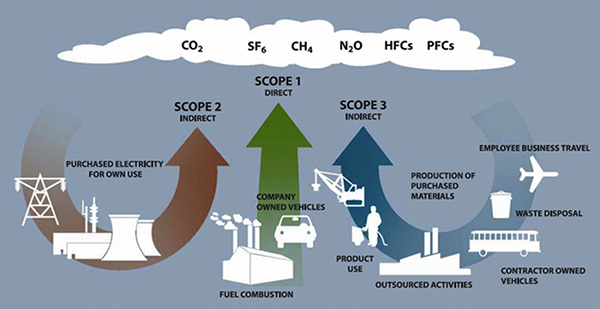So many schemes, so many participants. How can we ensure everyone uses the same measurements?
The International Organization for Standardization (ISO) is the world’s largest developer of international standards. It is a non-governmental network of 163 national standards institutes, bridging public and private sectors. By developing ISO 14064, it has established verifiable requirements to help organisations measure and report on their GHG emission reduction projects.
ISO 14064 is an independent, voluntary GHG project accounting standard, and is deliberately policy neutral. Whereas the GHG Project Protocol specifies tools and accounting methods, ISO 14064 simply gives general guidance; specific tools or tests can be defined by the GHG programme or regulation under which ISO 14064 is used.
For this reason, ISO 14064 has been a flexible tool and consequently, used by many regulatory and voluntary schemes.
How is ISO 14064 made up?
ISO 14064 classifies emissions into three groups:

- Scope 1 – Direct: emissions directly controlled by the organisation
- Scope 2 – Energy indirect: emissions derived from the organisation’s activities but generated by other entities, for instance, those from the energy provider’s power station
- Scope 3 – Other indirect: emissions derived from the production of purchased materials and services, such as, waste disposal and outsourced activities
ISO 14064 consists of three parts, each with a different technical focus:
- The first part (14064-1) specifies requirements for organisation level for quantification and reporting of greenhouse gas emissions and removals
- The second part (14064-2) details requirements for quantifying, monitoring and reporting emission reductions and removal enhancements from GHG mitigation projects
- The third part (14064-3) provides requirements and guidance for the validation and verification of GHG declarations and claims.
The third part of ISO 14064 establishes international guidelines for the inventory and project verification for the first time. Verification is an important component to GHG trading and markets. Companies interested in participating in such markets can structure programs and projects, considering the ISO 14064 verification requirements.
What are the ISO 14064 objectives?
The ISO 14064 objectives are to:
- Enhance environmental integrity by promoting consistency, transparency and credibility in GHG quantification, monitoring, reporting and verification
- Enable organisations to identify and manage GHG-related liabilities, assets and risks
- Create comparable GHG units
- Facilitate the trade of GHG allowances or credits
- Support the design, development and implementation of comparable and consistent GHG schemes or programmes.
How can ISO 14064 benefit my organisation?
ISO 14064 can help you:
- Prove your commitment to reducing your carbon emissions
- Develop robust, best practice, internal mechanisms for quantifying and reporting GHG emissions
- Prepare legitimate GHG assertions, claims and reports
- Quantify and report emission reductions from projects
Good greenhouse gas management has become critical for organisations. More companies are including environmental performance criteria in their procurement process. Greenhouse gases have become a tradable commodity.
With independent verification, organisations can publish credible information about their carbon footprint, carbon neutrality and/or reductions.
International corporations can prepare global inventories using a single set of rules and procedures. Companies can compare themselves to their counterparts throughout the world in terms of GHG performance, potentially leveraging their exemplary GHG emission performance into a competitive advantage.
Why did the ISO develop an international climate change standard when there are already so many programs, standards and protocols that exist at the regional or national level?
The proliferation of GHG-related methodologies, protocols, schemes and regimes is exactly why the ISO standard is so necessary. GHG accounting and reporting practices needed clarity and consistency.
Greenhouse gas emissions have a global impact; reductions in one region serve to reduce the global GHG inventory. Consequently, GHG emissions effectively become a global currency, necessitating an international standard for reporting and measurement.
How can an organisation follow the ISO 14064 standard in addition to another scheme?
The ISO 14064 standard does not preclude an organisation from participating in other GHG programs, registries or schemes. In fact, it is intended that this standard can be easily used in conjunction with another GHG program.
Key points at a glance:
- ISO 14064 has established verifiable framework to help organisations measure and report on their GHG emission reduction projects.
- ISO 14064 is an independent, voluntary GHG project accounting standard, and is deliberately policy neutral. It is a flexible tool and consequently has been used by many regulatory and voluntary schemes.
- The ISO 14064 objectives are to:
- Promote consistency, transparency and credibility in GHG quantification, monitoring, reporting and verification
- Enable organisations to identify and manage GHG-related liabilities, assets and risks
- Create comparable GHG units
- Facilitate the trade of GHG allowances or credits
- Support the design, development and implementation of comparable and consistent GHG schemes or programs.